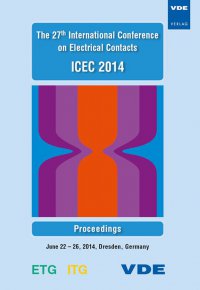Visualisation of arc running on divergent electrodes and extinction in the arc splitter chamber
Konferenz: ICEC 2014 - The 27th International Conference on Electrical Contacts
22.06.2014 - 26.06.2014 in Dresden, Deutschland
Tagungsband: ICEC 2014
Seiten: 6Sprache: EnglischTyp: PDF
Persönliche VDE-Mitglieder erhalten auf diesen Artikel 10% Rabatt
Autoren:
Drebenstedt, Christian; Rock, Michael (Group for Lightning and Overvoltage Protection, Technische Universitaet Ilmenau, Germany)
Ehrhardt, Arnd; Beier, Stefanie (DEHN + SOEHNE GmbH + Co. KG, Neumarkt, Germany)
Inhalt:
In low-voltage switchgear with arc splitter chambers the fast running of the arc along the running rails is of vital importance for current limitation, especially in case of high prospective short-circuit currents. In case of direct current applications, however, this running must also be tested and assessed in case of relatively low short-circuit currents. Arc runners and splitter chambers are not only used for circuit breakers, but also for spark-gap-based lightning current arresters used for d.c. applications. These devices are stressed with follow current arc driven by the mains voltage and with lightning impulse currents. The behavior of arcs in case of impulse currents on divergent running rails has been insufficiently investigated so far. For this reason, the running rail arrangement of a lightning current arrester with splitter chamber was chosen for investigating the running of small and medium direct and impulse current arcs. Apart from the general requirements, the aim was to separate the functions for this arrester. After the arrester has operated in case of an overvoltage, the high-energy impulse arc should not run to the splitter chamber to prevent that it is thermally overloaded. The subsequent follow current arc driven by the mains voltage should be extinguished fast in the splitter chamber. This article describes this function separation based on the physical effects used. Fixing the arc root points in case of high impulse currents and the arc running in case of low currents on divergent electrodes can be verified by means of high-speed videos combined with transient current/voltage measurements.


